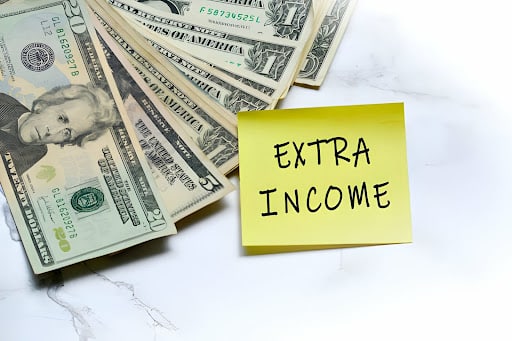How is Bounce Rate Calculated?

What Is Website Bounce Rate?
Website bounce rate is a metric that measures the number of visitors leaving your website after viewing just one page. It’s the percentage of website visitors who leave your website without engaging in any further interaction or navigation. A high bounce rate can be an indication of several factors such as poor website design, irrelevant or low-quality content, slow page loading speed, and poorly targeted traffic. In this article, we’ll explore what website bounce rate is, what factors contribute to a high bounce rate, and how you can reduce your website’s bounce rate.
Understanding Website Bounce Rate
Imagine visiting a website and leaving immediately without viewing any other pages or engaging in any interaction with the website. This action is referred to as a ‘bounce’. A website bounce rate, therefore, is the percentage of visitors that quickly leave your website without engaging further. It’s calculated by dividing the number of single-page visits by the total number of pages viewed on your website. For instance, if your website had 10,000 visits and 4,000 of them were single-page visits, then your bounce rate would be 40%.
Your website’s bounce rate is an important metric that indicates the effectiveness of your website in attracting and retaining visitors. The lower your bounce rate, the better, as it means that your visitors are exploring your website and engaging with your content. A high bounce rate, on the other hand, means that your website is not meeting visitors’ expectations, and they are leaving quickly without taking any action.
Factors Contributing to High Bounce Rate

Several factors can contribute to a high website bounce rate. It’s essential to know the contributing factors to understand what areas to focus on to reduce your website’s bounce rate.
1. Irrelevant or low-quality content
Visitors come to your website with a purpose, and if they don’t find what they’re looking for, they’ll quickly leave. If your website’s content is not informative, relevant, or engaging, visitors will bounce off. Therefore, focus on creating quality and informative content that adds value to your visitors.
2. Slow Website Loading Speed
In today’s fast-paced era, people don’t have patience for websites that load slowly. A slow website can quickly turn off visitors and prompt them to leave. Ensure to optimize your website’s loading speed, keep your images and video files compressed, and use caching plugins.
3. Poor Website Design
If your website design is cluttered, unappealing, and takes away from your content or products, visitors will quickly leave. Ensure to have a user-friendly and visually appealing design to keep visitors engaged.
4. Poor Targeting
Targeting the right audience is crucial to reduce your website’s bounce rate. If visitors are finding your website through irrelevant or misleading ads, they will bounce off even when they arrive on the website. Ensure your website content is well-aligned with your target audience.
5. Misleading Information
If visitors are finding your website through misleading titles, meta descriptions, or headlines, it’s likely, they won’t stay long. Ensure your headlines and meta descriptions reflect your content’s actual value and purpose to keep visitors engaged.
Reducing Website Bounce Rate

To reduce your website’s bounce rate, you need to take a multi-dimensional approach that looks at all contributing factors. Here are a few strategies to help reduce your website’s bounce rate:
1. Improve Website Design and User Experience:
Ensuring that your website is clean, appealing, and well-organized can help reduce the bounce rate. Additionally, ensure that your website layout and structure are intuitive and easy to navigate to improve user experience.
2. Optimize Website Loading Speed:
Load speed time impacts how users perceive your website. Ensure you have optimized your website’s load time by compressing images and video files as well as using caching plugins to help speed up the website.
3. Create Engaging Content:
Ensure you’re creating visually appealing and informative content that meets the needs of your target audience. Use headlines, images, and infographics to provide context and guide visitors through your content.
4. Target the Right Audience:
Ensure your content is specifically designed to meet the needs of your target audience. Consider refining your targeting through ad targeting and optimization to ensure that your visitors are relevant.
5. A/B Test Website Design:
Test alternate designs on your website to see what designs are compelling visitors to stay and to identify issues that are causing visitors to leave.
The Importance of Internal Linking for SEO
Internal linking plays a crucial role in optimizing your website for search engines and improving user experience. By strategically linking pages within your website, you can enhance crawlability, increase visibility, and provide a seamless navigation experience for your visitors. In this section, we’ll explore the importance of internal linking and discuss effective strategies to leverage its benefits.
1. Enhancing Crawlability with Internal Links
Internal links help search engine crawlers discover and index your web pages more efficiently. When search engines encounter a link on one page that leads to another page within your website, they follow that link and explore the linked page. By incorporating internal links throughout your website, you ensure that all your important pages are easily discoverable by search engines, which can positively impact your website’s overall visibility in search results.
2. Distributing Link Authority and Boosting SEO
Internal links also play a role in distributing link authority or link juice within your website. When one page on your website earns external backlinks or has a higher authority, you can pass some of that authority to other pages by linking to them. By strategically linking to important pages that you want to rank higher in search results, you can strengthen their SEO performance and increase their chances of ranking well for relevant keywords.
3. Improving User Experience and Navigation
Internal linking is not only beneficial for search engines but also for your website visitors. By providing relevant and contextual links within your content, you guide visitors to related information, allowing them to explore further and delve deeper into your website. This improves the overall user experience, keeps visitors engaged, and encourages them to spend more time on your website, reducing the likelihood of bouncing.
4. Utilizing Anchor Text for Relevance
Anchor text, the clickable text within a link, is an important aspect of internal linking. It provides search engines with context about the linked page’s content. When creating internal links, use descriptive and keyword-rich anchor text that accurately represents the destination page. This helps search engines understand the relevance and relationship between the linked pages, further enhancing your website’s SEO.
5. Best Practices for Internal Linking
To make the most of internal linking, consider the following best practices:
- Use descriptive anchor text that provides clear context for the linked page.
- Link to relevant and related pages within your website.
- Ensure your internal links are natural and add value to the reader’s experience.
- Avoid excessive internal linking, as it can appear spammy and detract from the user experience.
- Regularly audit and update your internal links to ensure they remain relevant and functional.
Conclusion
Website bounce rate is a crucial metric used to measure the effectiveness of your website in attracting and retaining visitors. A high bounce rate can indicate that your website is not meeting visitor expectations, and visitors are leaving without taking any action. To reduce your website’s bounce rate, focus on creating quality and informative content, optimizing website loading speed, and ensuring that your website design and user experience are impressive. By regularly monitoring your website’s performance and testing strategies to reduce bounce rates, you can improve visitor engagement, make the most of your website traffic, and achieve your website’s goals.
Frequently Asked Questions about Website Bounce Rate and Internal Linking
Q: What is considered a high bounce rate?
A: A high bounce rate varies depending on the industry and type of website, but generally, a bounce rate above 70% is considered high. However, it’s important to consider other factors and compare your bounce rate to industry benchmarks for a more accurate assessment.
Q: Can a high bounce rate negatively impact SEO?
A: Yes, a high bounce rate can negatively impact SEO. Search engines may interpret a high bounce rate as a signal that your website is not meeting user expectations or providing valuable content, which can lead to lower rankings in search results.
Q: How can I track my website’s bounce rate?
A: You can track your website’s bounce rate using web analytics tools like Google Analytics. These tools provide detailed insights into user behavior, including the bounce rate, allowing you to monitor and analyze your website’s performance.
Q: Are all bounces considered negative?
A: Not necessarily. While a high bounce rate generally indicates a lack of engagement, there are cases where a bounce can be considered positive. For example, if a visitor finds the information they were seeking immediately on the landing page and then converts or completes a desired action, it can be viewed as a successful interaction.
Q: Should I aim for a 0% bounce rate?
A: It’s nearly impossible to achieve a 0% bounce rate as some users may naturally leave after finding the information they need. Instead, focus on reducing your bounce rate to a level that is reasonable for your industry and website type, while also considering other performance metrics and user engagement.
Q: How many internal links should I include in my content?
A: The number of internal links depends on the length and structure of your content. Include enough links to provide valuable connections to related pages, but avoid excessive linking, as it can appear spammy and disrupt the reading experience. Aim for a balance between providing helpful links and maintaining a clean and readable content flow.
Q: Can internal linking improve my website’s SEO ranking?
A: Yes, internal linking can improve your website’s SEO ranking. By strategically linking to important pages and using descriptive anchor text, you can help search engines understand the relevance and hierarchy of your content. This can positively impact your rankings for relevant keywords and enhance overall SEO performance.
Q: How often should I review and update my internal links?
A: It’s good practice to periodically review and update your internal links, especially as your website evolves and content changes. Regular audits can help ensure that your internal links remain relevant, functional, and aligned with your website’s structure and goals.
Q: Can I use external links in addition to internal links?
A: Yes, incorporating external links to reputable and relevant sources can provide additional value to your content. External links can support your statements, offer further information, and demonstrate credibility. However, be mindful not to overdo it, as the primary focus should be on internal linking to keep visitors engaged within your website.
Q: Are there any SEO tools to help with internal linking strategies?
A: Yes, there are several SEO tools available that can assist with internal linking strategies, such as Moz, SEMrush, and Ahrefs. These tools provide insights, recommendations, and analysis to help you optimize your internal linking structure and improve SEO performance.





